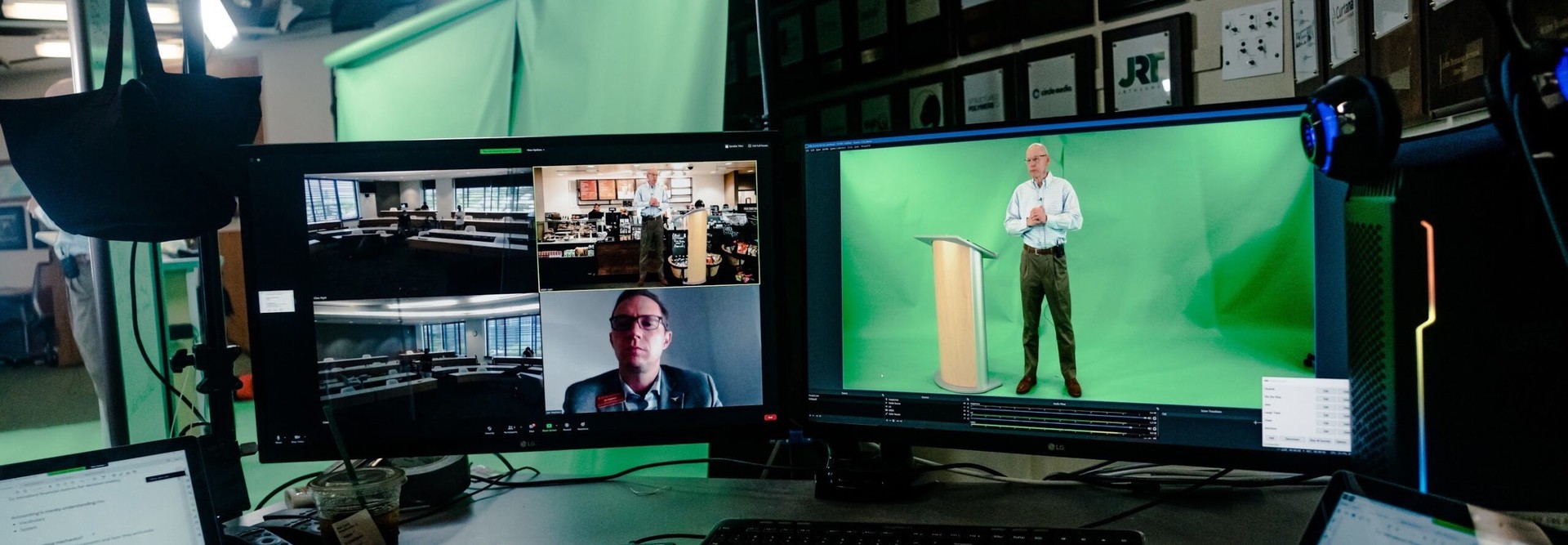One of the main objectives in creating Recourse was to keep professors and students safe during the pandemic, says Contextual Content Group founder Jim Spencer. At the same time, he and his team wanted to offer an innovative way to increase teacher-student interaction. “This is at the core of teaching,” he explains. “We also just wanted to create something that works, where students say, ‘This is cool.’”
The platform, Spencer says, “has no real barrier to entry,” since a teacher can simply walk into the studio, unmasked, plug in a laptop or an iPad device and start teaching as a hologram to students both online and in a classroom.
Inside the teaching studio, a producer is present to keep things running smoothly, and the instructor enjoys a 12-foot walking range. “This allowed me to move toward a classroom student who was contributing a comment and move to a side of the classroom or toward a student to pose a question,” Limberg explains. “Students could visit with me by coming to the front of the classroom, just as they would if I was there. In addition, a mechanism enabled students to visit with me privately if it was a confidential matter.”
RELATED: Know the best practices for engaging students online.
Limberg, who has always been drawn to exploring new methods of teaching, says his interest in working with Recourse was “magnified by the need for innovation during the pandemic,” and the need for social distancing.
The producer, well-masked and socially distanced, handled all operational details, including audio, sound effects, backgrounds, breakout groups and the projection of PowerPoint presentations and other visuals on two large monitors in the classroom. That support allowed Limberg to focus solely on teaching.
Feedback has been positive from Limberg’s students, who appear to have “embraced the technology,” he says. With their participation in feedback surveys, Limberg found that the students have become “an unofficial but meaningful part of the development team.”
The technology allows professors to be present with their students while also keeping them safe from illness, Spencer says. And after the pandemic? “There’s a huge convenience factor,” he says. “You’re also expanding the footprint of the university.”
MORE ON EDTECH: Here's three ways to increase student engagement in online learning.











